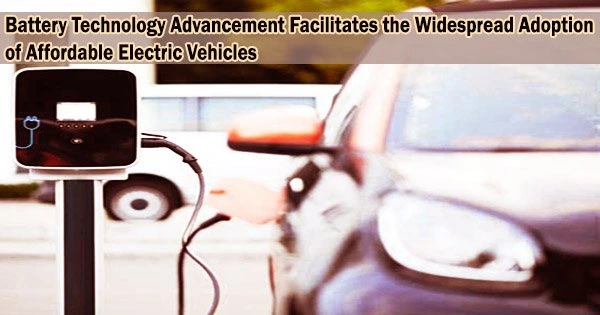A standard EV battery may now be charged in 10 minutes thanks to advancements in battery design. Today (October 12, 2022) a record-breaking combination of a quicker charge time and more energy gathered for a longer travel range was published in the journal Nature.
“The need for smaller, faster-charging batteries is greater than ever,” said Chao-Yang Wang, the William E. Diefenderfer Professor of Mechanical Engineering at Penn State and lead author on the study. “There are simply not enough batteries and critical raw materials, especially those produced domestically, to meet anticipated demand.”
The Air Resources Board of California adopted a comprehensive plan in August to impose restrictions on and eventually outlaw the sale of gasoline-powered vehicles in the state. In the United States, the internal combustion engine will essentially be phased out by 2035 in the market for automobiles.
Wang noted that battery-powered electric vehicles (EVs) must overcome two significant limitations if new car sales are to shift to them: they are too slow to recharge and too huge to be effective and economical. Some EVs can require a whole day to recharge, as opposed to just a few minutes at the petrol station, depending on the battery.
“Our fast-charging technology works for most energy-dense batteries and will open a new possibility to downsize electric vehicle batteries from 150 to 50 kWh without causing drivers to feel range anxiety,” said Wang, whose lab partnered with State College-based startup EC Power to develop the technology.
Acting as a stimulus, the nickel foil self-regulates the battery’s temperature and reactivity which allows for 10-minute fast charging on just about any EV battery.
Chao-Yang Wang
“The smaller, faster-charging batteries will dramatically cut down battery cost and usage of critical raw materials such as cobalt, graphite, and lithium, enabling mass adoption of affordable electric cars.”
In order to demand the greatest performance from the battery, the technique depends on internal thermal modulation, an active approach of temperature control, Wang said. Batteries work best when they are warm, but not too warm.
For battery engineers, maintaining batteries at the ideal temperature continuously has been a huge difficulty. Historically, they have relied on external, bulky heating and cooling systems to regulate battery temperature, which respond slowly and waste a lot of energy, Wang said.
Wang and his group made the decision to control the battery’s internal temperature instead. In addition to anode, electrolyte, and cathode, the researchers created a unique battery structure that includes an ultrathin nickel foil as a fourth component.
“Acting as a stimulus, the nickel foil self-regulates the battery’s temperature and reactivity which allows for 10-minute fast charging on just about any EV battery,” Wang explained.
“True fast-charging batteries would have an immediate impact,” the researchers write. “Since there are not enough raw minerals for every internal combustion engine car to be replaced by a 150 kWh-equipped EV, fast charging is imperative for EVs to go mainstream.”
“The study’s partner, EC Power, is working to manufacture and commercialize the fast-charging battery for an affordable and sustainable future of vehicle electrification,” Wang said.
The other coauthors on the study are Teng Liu, Xiao-Guang Yang, Shanhai Ge, and Yongjun Leng of Penn State and Nathaniel Stanley, Eric Rountree, and Brian McCarthy of EC Power.
The U.S. Department of Energy, the U.S. Department of Defense, the U.S. Air Force, and the William E. Diefenderfer Endowment supported the work.





